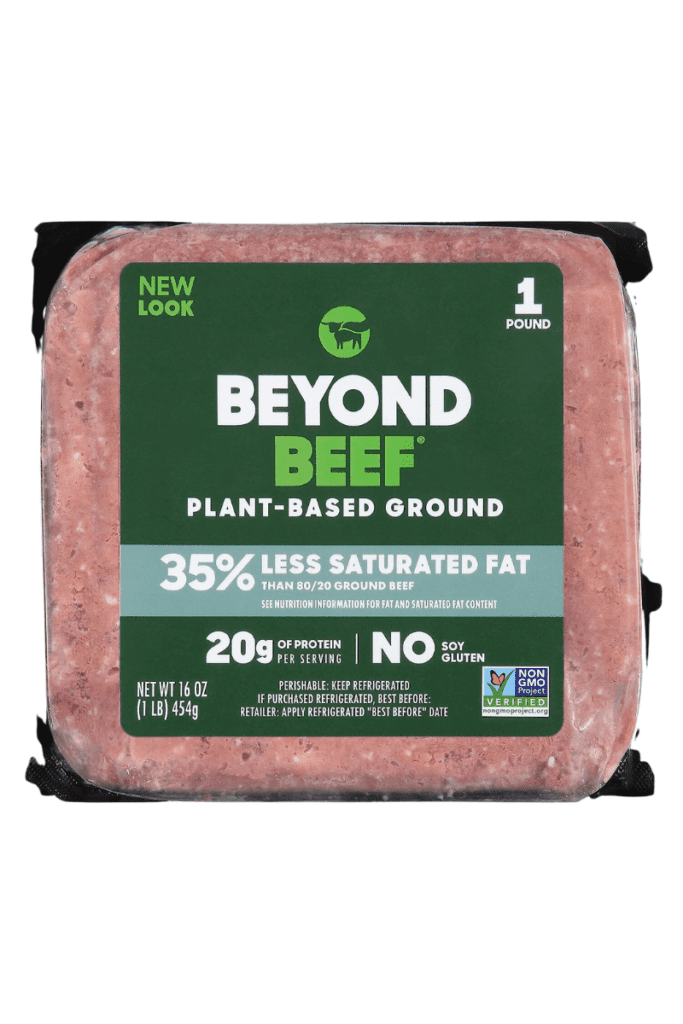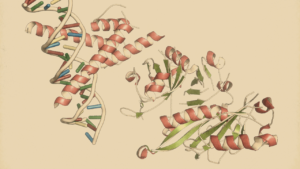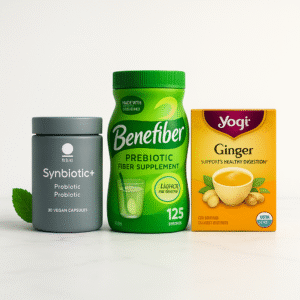The Wonderful Science Facts Behind Plant Based Foods
Unlock the secrets of plant-based foods! Discover the fascinating science behind their health benefits and why they’re revolutionizing the eating way.

Consuming more healthy and sustainable plant based foods is being encouraged to mitigate the adverse effects of the modern food supply on both human and global health.
The rising demand for plant-based products has led the food industry to innovate and create a new generation of substitutes for meat, fish, eggs, milk, cheese, and yogurt.
This article aims to explore the scientific principles behind the development of plant-based alternatives for meat, eggs, and milk. It will discuss how these analogs can be combined to form structures that closely resemble those found in animal products.
Plant Based Ingredients
Plant-based Proteins
Plant-based foods use versatile plant proteins that can thicken, gel, emulsify, foam, and hold fluids✅✅.
These proteins are also a source of essential amino acids.
Soybeans, peas, fava beans, mung beans, lentils, algae, and microalgae offer unique protein sources, but consistency in functionality remains a challenge.
Further research is necessary to identify appropriate sources and isolation procedures for reliable functional ingredients. Mimicking the structural organization of animal products is also a challenge to achieve similar physicochemical attributes.
Plant-based Carbohydrates
Carbohydrates, found in plant-based sources, can be utilized to create animal product substitutes✅.
They offer various functional properties such as sweetness, thickness, gelling, emulsification, structure formation, stabilization, and fluid-holding properties in plant-based foods✅.
Careful selection of carbohydrate ingredients is crucial to achieve the desired quality and nutritional attributes in the final product.
Polysaccharides are often combined with proteins to achieve desirable texture and sensory properties in plant-based foods✅.
Plant-based Lipids
Plant-based fats and oils can be derived from various sources, such as algae, canola, coconut, cocoa, corn, flaxseed, olive, palm, safflower, soybean, and sunflower.
The crystallization characteristics of fats play a critical role in the functionality and quality attributes of many foods.
Manufacturers often use high-melting plant-derived fats, such as cocoa butter and coconut oil, in their products.
However, these fats have high levels of saturation that may pose heart health risks✅.
To mimic animal fats' behavior, it is challenging to use plant-derived fats due to their higher unsaturated fatty acid content.
Increasing the degree of saturation using hydrogenation may have adverse nutritional effects.
Plant-based fats and oils' nutritional value and stability depend on their fatty acid composition.
Polyunsaturated fatty acids (PUFAs), especially omega-3s found in plant-based fats and oils like flaxseed and algae, may have health benefits such as reducing heart and brain diseases✅✅.
However, more research is needed to confirm these claims through clinical trials and meta-analysis.
These fats can be used as a fish oil alternative.
Preventing oxidation during storage and processing is essential to avoid off-flavors and toxic products✅✅.
This can be achieved by controlling temperature, oxygen, and light levels, reducing contamination, incorporating antioxidants, utilizing chelating agents, or structuring approaches✅✅✅.
These approaches are crucial for creating nutritionally-fortified plant-based foods.
Other Additives
In order to produce top-notch plant-based foods, it's necessary to incorporate a range of additives such as colors, flavors, buffers, preservatives, and crosslinking agents✅.
Consider sourcing additives from natural botanical ingredients, such as carotenoids, anthocyanins, curcuminoids, essential oils, or antimicrobial peptides for preservatives.
These options are derived from natural sources and can be more beneficial than synthetic alternatives.
The Science of Plant Based Foods
Plant-based ingredients are increasingly being used to create a variety of food products that can replace animal-based options like meat, fish, eggs, and milk.
Additionally, plant-based ingredients are used in food items that typically require animal-based components, such as cheese, dressings, sauces, spreads, and yogurts.
This overview will provide a brief introduction to the primary plant-based foods, encompassing substitutes for meat, milk, and eggs.
Plant-Based Meat
The rise of plant-based meat products, like Beyond Meat and Impossible Foods, has greatly impacted the food industry✅.
In the US, the plant-based meat market was valued at almost $940 million in 2019, a 38% increase from two years prior✅.
While texturized vegetable proteins have allowed for the creation of meat analogs, mimicking the complex structure of real meat has proven challenging✅.
The arrangement of muscle fibers, connective tissue, and adipose tissue is crucial in determining the properties of meat products.
To create plant-based meat alternatives that closely resemble real meat, careful selection of ingredients and processing techniques is crucial.
Factors such as muscle fiber, connective tissue, and fat content must be considered✅✅✅.
Plant-based macronutrients like proteins, fats, and polysaccharides, along with micronutrients and additives such as vitamins, minerals, colors, flavorings, binders, and preservatives are used to create a successful meat analog✅.
It is important to optimize the ingredients and processing techniques for each specific meat product being replicated.
Appearance: To simulate real meat, particles or fibers can be added to scatter light, and surface roughness and wetness can be controlled to mimic the sheen.
Natural pigments can replicate the color of meat, such as pinky-red before cooking and brown after cooking.
Food companies use various strategies, such as beet juice extract or plant-based heme protein, to create desirable meat-like color characteristics✅✅.
Texture: Plant-based products like sausages, burgers, and nuggets are made using TVPs to mimic the texture of meat✅.
However, replicating the texture of whole-muscle products such as beef steaks, chicken breasts, or pork chops is more challenging.
Two main approaches are being explored: physicochemical and processing methods.
Physicochemical approaches control molecular interactions to create meat-like structures✅✅, while mechanical processing devices like extruders and shear cells can also be used✅✅✅.
Extrusion is currently the most common method, but shear cells are gaining popularity.
Cooking loss: The fluid content of meat products affects their appearance, texture, mouthfeel, and cooking properties.
Meat analogs must simulate this property.
Researchers use physical chemistry models to identify key factors affecting fluid-holding properties, including solvent-biopolymer interactions, gel network elastic modulus, and osmotic pressure✅.
Manipulating biopolymer type, concentration, and cross-linking, as well as incorporating polysaccharides, can improve fluid-holding properties✅.
Flavor: Meat flavor is determined by specific aromatic molecules, which are produced through complex chemical reactions during cooking.
The taste of cooked meat is determined by a balance of non-volatile molecules that interact with taste receptors in the mouth.
To create meaty flavors in plant-based alternatives, companies use soy leghemoglobin✅, mycoproteins✅, and algae✅.
Plant-derived materials can also be used to form meaty flavors through controlled reactions✅.
Research is ongoing to reduce undesirable flavors in some plant-derived ingredients✅.
Nutritional profile: Developing plant-based meat analogs with the same nutritional profile as meat is challenging.
Meats are high in protein and contain essential micronutrients like zinc, iron, and vitamin B.
Enriching plant-based meat with bioavailable forms of these micronutrients is important.
Encapsulation technologies like emulsions or nanoemulsions can be used to achieve this✅.
Best Features:
- Non-GMO
- Vegan Approved
- Halal Certified
- Kosher Certified
- No Cholesterol
- 20 g Plant-based Protein
Why buy it
- 35% Less Saturated Fat
- No Antibiotics or Hormones
- Quality Ingredients

Plant-based Milk
Plant-based milk analogs account for over 40% of sales in the plant-based food sector✅.
Recent articles have covered the raw materials, processing methods, properties, attributes, and nutritional profiles of these products✅✅✅✅✅✅.
Raw materials and production: Milk analogs are made up of various particles in an aqueous medium, including oil bodies, fat droplets, protein aggregates, plant tissue fragments, and insoluble calcium carbonate particles✅.
There are two approaches to creating milk analogs: plant tissue disruption and homogenization. Particle reduction technologies and stabilizers are used to create stable milk analogs with desirable properties✅.
Milk analogs can be fortified with micronutrients to provide nutrients that may be deficient in plant-based diets✅.
Appearance and sensory: Milk analogs achieve a creamy appearance by controlling the concentration and size of colloidal particles.
The lightness of milk analogs increases with increasing particle concentration, and their inherent color depends on the type and concentration of natural pigments✅.
To achieve a desirable appearance, certain natural pigments may need to be added or removed.
Recreating the sensory attributes of cow's milk is challenging due to its bland✅✅ but characteristic flavor profile, while milk analogs contain flavors from plant raw materials and processing✅.
Researchers are developing new plant breeds and processing methods to reduce off-flavors in milk analogs✅.
Nutritional profile: Plant-based milk may have a less favorable nutritional profile than cow's milk due to lower levels of vitamin A and calcium✅.
However, advanced encapsulation technologies can be used to fortify plant-based milk with these micronutrients✅.
Plant-based Egg
Hen's eggs are mostly made up of water, proteins, and lipids, which make them versatile ingredients in many foods✅.
Plant-based egg substitutes should mimic the desirable properties of real eggs, such as undergoing a sol-gel transition when heated.
Instrumental methods can be used to provide information about protein denaturation and gelation temperatures✅.
The nature of the gels formed depends on protein type, concentration, and environmental conditions✅.
Plant-based ingredients in egg analogs should also exhibit good emulsifying properties.
The yellowish color of egg yolks may be achieved by adding natural pigments, while an appropriate flavor profile may be achieved by adding natural flavors, herbs, or spices.
JUST Egg is a successful egg substitute made with mung bean protein and emulsified canola oil✅.
It contains transglutaminase, an enzyme that crosslinks the proteins, thereby increasing the gel strength and water-holding capacity to better mimic real eggs✅.
Other functional ingredients are also added to closely simulate the properties of real eggs.
Nutritional profile:
Plant-based eggs have a less favorable nutritional profile than hen's eggs due to the wider range of vitamins and minerals found naturally in hen's eggs.
To compensate for this, plant-based egg products may need to be fortified with bioavailable forms of these micronutrients, which can be achieved through advanced encapsulation technologies.
Best Features:
- Non-GMO
- Egg Free
- Kosher Certified
- No Cholesterol
- Freshness Guarantee
Why buy it
- “Game Changer” Foods
- No Antibiotics or Hormones
- Sustainable Eating

Frequently Asked Questions
Is a plant-based diet suitable for everyone?
What are the benefits of a plant-based diet?
What is a plant-based diet?
References
Fitnature uses only high-quality sources, including peer-reviewed studies, to support the facts within our articles. Read our editorial process to learn more about how we fact-check and keep our content accurate, reliable, and trustworthy.
- Arab-Tehrany, Elmira, et al. “Beneficial Effects and Oxidative Stability of Omega-3 Long-Chain Polyunsaturated Fatty Acids.” Trends in Food Science & Technology, vol. 25, no. 1, May 2012, pp. 24–33, https://doi.org/10.1016/j.tifs.2011.12.002.
- Aydar, Elif Feyza, et al. “Plant-Based Milk Substitutes: Bioactive Compounds, Conventional and Novel Processes, Bioavailability Studies, and Health Effects.” Journal of Functional Foods, vol. 70, July 2020, p. 103975, https://doi.org/10.1016/j.jff.2020.103975.
- Bendall, J. G. “Aroma Compounds of Fresh Milk from New Zealand Cows Fed Different Diets – PubMed.” Journal of Agricultural and Food Chemistry, vol. 49, no. 10, Oct. 2001, https://doi.org/10.1021/jf010334n.
- Bröckel, Ulrich, et al. Product Design and Engineering: Formulation of Gels and Pastes. 2013, https://www.wiley.com/en-au/Product+Design+and+Engineering%3A+Formulation+of+Gels+and+Pastes-p-9783527332205. Accessed 13 July 2023.
- Cornet, Steven H. V., et al. “Enhancing the Water Holding Capacity of Model Meat Analogues through Marinade Composition.” Journal of Food Engineering, vol. 290, Feb. 2021, p. 110283, https://doi.org/10.1016/j.jfoodeng.2020.110283.
- Dekkers, Birgit L., et al. “Structuring Processes for Meat Analogues.” Trends in Food Science & Technology, vol. 81, Nov. 2018, pp. 25–36, https://doi.org/10.1016/j.tifs.2018.08.011.
- Fraser, Rachel Z., et al. “Safety Evaluation of Soy Leghemoglobin Protein Preparation Derived From Pichia Pastoris, Intended for Use as a Flavor Catalyst in Plant-Based Meat.” International Journal of Toxicology, vol. 37, no. 3, 2018, pp. 241–62, https://doi.org/10.1177/1091581818766318.
- Gharibzahedi, Seyed Mohammad Taghi, et al. “Innovative Food Processing Technologies on the Transglutaminase Functionality in Protein-Based Food Products: Trends, Opportunities and Drawbacks.” Trends in Food Science & Technology, vol. 75, May 2018, pp. 194–205, https://doi.org/10.1016/j.tifs.2018.03.014.
- Hemler, Elena C., and Frank B. Hu. “Plant-Based Diets for Cardiovascular Disease Prevention: All Plant Foods Are Not Created Equal.” Current Atherosclerosis Reports, vol. 21, no. 5, Mar. 2019, pp. 1–8, https://doi.org/10.1007/s11883-019-0779-5.
- Herbach, K. M., et al. “Impact of Thermal Treatment on Color and Pigment Pattern of Red Beet (Beta Vulgaris L.) Preparations.” Journal of Food Science, vol. 69, no. 6, pp. C491–98, https://doi.org/10.1111/j.1365-2621.2004.tb10994.x. Accessed 13 July 2023.
- “How Plant-Based Meat and Seafood Are Processed.” IFT.Org, https://www.ift.org/news-and-publications/food-technology-magazine/issues/2019/october/columns/processing-how-plant-based-meat-and-seafood-are-processed. Accessed 13 July 2023.
- “Invited Review: Sensory Analysis of Dairy Foods.” Journal of Dairy Science, vol. 90, no. 11, pp. 4925–37, https://doi.org/10.3168/jds.2007-0332. Accessed 13 July 2023.
- Ismail, Ishamri, et al. “Meat Analog as Future Food: A Review.” Journal of Animal Science and Technology, vol. 62, no. 2, Mar. 2020, pp. 111–20, https://doi.org/10.5187/jast.2020.62.2.111.
- Jacobsen, Charlotte. “NYAS Publications.” Annals of the New York Academy of Sciences, vol. 1190, no. 1, pp. 141–50, https://doi.org/10.1111/j.1749-6632.2009.05263.x. Accessed 13 July 2023.
- Jeske, Stephanie, et al. “Formation, Stability, and Sensory Characteristics of a Lentil-Based Milk Substitute as Affected by Homogenisation and Pasteurisation.” PubAg, https://pubag.nal.usda.gov/catalog/6477874. Accessed 13 July 2023.
- John Brady. “Product Details.” Cornell University Press, 2 Apr. 2019, https://www.cornellpress.cornell.edu/book/9780801450754/introductory-food-chemistry/#bookTabs=1. Accessed 13 July 2023.
- “JUST Egg.” Eat Just, https://www.ju.st/. Accessed 13 July 2023.
- K. Kyriakopoulou, et al. “Plant-Based Meat Analogues.” Research@WUR, https://research.wur.nl/en/publications/plant-based-meat-analogues. Accessed 13 July 2023.
- Kayın, Nilay, et al. “Color Stability and Change in Bioactive Compounds of Red Beet Juice Concentrate Stored at Different Temperatures.” Journal of Food Science and Technology, vol. 56, no. 11, Aug. 2019, pp. 5097–106, https://doi.org/10.1007/s13197-019-03982-5.
- Kovacs-Nolan, Jennifer, et al. “Advances in the Value of Eggs and Egg Components for Human Health – PubMed.” Journal of Agricultural and Food Chemistry, vol. 53, no. 22, Nov. 2005, https://doi.org/10.1021/jf050964f.
- Lakemond, C. M., et al. “Heat Denaturation of Soy Glycinin: Influence of pH and Ionic Strength on Molecular Structure – PubMed.” Journal of Agricultural and Food Chemistry, vol. 48, no. 6, June 2000, https://doi.org/10.1021/jf9908704.
- Loveday, S. M. “Plant Protein Ingredients with Food Functionality Potential.” Nutrition Bulletin, vol. 45, no. 3, pp. 321–27, https://doi.org/10.1111/nbu.12450. Accessed 13 July 2023.
- Loveday, Simon M. “Food Proteins: Technological, Nutritional, and Sustainability Attributes of Traditional and Emerging Proteins.” Annual Review of Food Science and Technology, vol. 10, no. 1, Mar. 2019, pp. 311–39, https://doi.org/10.1146/annurev-food-032818-121128.
- Malav, O. P., et al. “Meat Analog: A Review – PubMed.” Critical Reviews in Food Science and Nutrition, vol. 55, no. 9, Jan. 2015, https://doi.org/10.1080/10408398.2012.689381.
- McClements, David Julian. “Development of Next-Generation Nutritionally Fortified Plant-Based Milk Substitutes: Structural Design Principles.” Foods, vol. 9, no. 4, Apr. 2020, https://doi.org/10.3390/foods9040421.
- McClements, David Julian, and Eric Decker. “Interfacial Antioxidants: A Review of Natural and Synthetic Emulsifiers and Coemulsifiers That Can Inhibit Lipid Oxidation – PubMed.” Journal of Agricultural and Food Chemistry, vol. 66, no. 1, Jan. 2018, https://doi.org/10.1021/acs.jafc.7b05066.
- Nogueira, Marina S., et al. “Oxidation Products from Omega-3 and Omega-6 Fatty Acids during a Simulated Shelf Life of Edible Oils.” LWT, vol. 101, Mar. 2019, pp. 113–22, https://doi.org/10.1016/j.lwt.2018.11.044.
- Phillips, Glyn O., and Peter A. Williams. Handbook of Hydrocolloids. Woodhead Publishing, 2020.
- “Plant-Based Protein.” The Good Food Institute, 12 Jan. 2021, https://gfi.org/resource/plant-based-meat-eggs-and-dairy-state-of-the-industry-report/. Accessed 13 July 2023.
- Prayson, Brigid, et al. “Fast Food Hamburgers: What Are We Really Eating?” Annals of Diagnostic Pathology, vol. 12, no. 6, Dec. 2008, pp. 406–09, https://doi.org/10.1016/j.anndiagpath.2008.06.002.
- Saini, Ramesh Kumar, and Young-Soo Keum. “Omega-3 and Omega-6 Polyunsaturated Fatty Acids: Dietary Sources, Metabolism, and Significance – A Review – PubMed.” Life Sciences, vol. 203, June 2018, https://doi.org/10.1016/j.lfs.2018.04.049.
- Schreuders, Floor K. G., et al. “Comparing Structuring Potential of Pea and Soy Protein with Gluten for Meat Analogue Preparation.” Journal of Food Engineering, vol. 261, Nov. 2019, pp. 32–39, https://doi.org/10.1016/j.jfoodeng.2019.04.022.
- Sethi, Swati, et al. “Plant-Based Milk Alternatives an Emerging Segment of Functional Beverages: A Review.” Journal of Food Science and Technology, vol. 53, no. 9, Sept. 2016, pp. 3408–23, https://doi.org/10.1007/s13197-016-2328-3.
- Sha, Lei, and Youling L. Xiong. “Plant Protein-Based Alternatives of Reconstructed Meat: Science, Technology, and Challenges.” Trends in Food Science & Technology, vol. 102, Aug. 2020, pp. 51–61, https://doi.org/10.1016/j.tifs.2020.05.022.
- Shahidi, Fereidoon, and Priyatharini Ambigaipalan. “Omega-3 Polyunsaturated Fatty Acids and Their Health Benefits – PubMed.” Annual Review of Food Science and Technology, vol. 9, Mar. 2018, https://doi.org/10.1146/annurev-food-111317-095850.
- Sman, R. G. M. van der, and A. J. van der Goot. “The Science of Food Structuring.” Soft Matter, vol. 5, no. 3, pp. 501–10, https://doi.org/10.1039/B718952B. Accessed 13 July 2023.
- Talukder, Suman. “Effect of Dietary Fiber on Properties and Acceptance of Meat Products: A Review – PubMed.” Critical Reviews in Food Science and Nutrition, vol. 55, no. 7, Jan. 2015, https://doi.org/10.1080/10408398.2012.682230.
- Tangyu, Muzi, et al. “Fermentation of Plant-Based Milk Alternatives for Improved Flavour and Nutritional Value.” Applied Microbiology and Biotechnology, vol. 103, no. 23–24, Dec. 2019, pp. 9263–75, https://doi.org/10.1007/s00253-019-10175-9.
- Watson, Elaine. “In Conversation with Givaudan: How Do You Create ‘Meaty’ Flavors in Plant-Based Meat?” Foodnavigator-Usa.Com, 22 Aug. 2019, https://www.foodnavigator-usa.com/Article/2019/08/22/In-conversation-with-Givaudan-How-do-you-create-meaty-flavors-in-plant-based-meat. Accessed 13 July 2023.
- Zahari, Izalin, et al. “Development of High-Moisture Meat Analogues with Hemp and Soy Protein Using Extrusion Cooking.” Foods (Basel, Switzerland), vol. 9, no. 6, June 2020, p. 772, https://doi.org/10.3390/foods9060772.
- Zhang, Jinchuang, et al. “Converting Peanut Protein Biomass Waste into ‘Double Green’ Meat Substitutes Using a High-Moisture Extrusion Process: A Multiscale Method to Explore a Process for Forming a Meat-Like Fibrous Structure – PubMed.” Journal of Agricultural and Food Chemistry, vol. 67, no. 38, Sept. 2019, https://doi.org/10.1021/acs.jafc.9b02711.
Review date not set.
How we reviewed this article:
Latest on:





